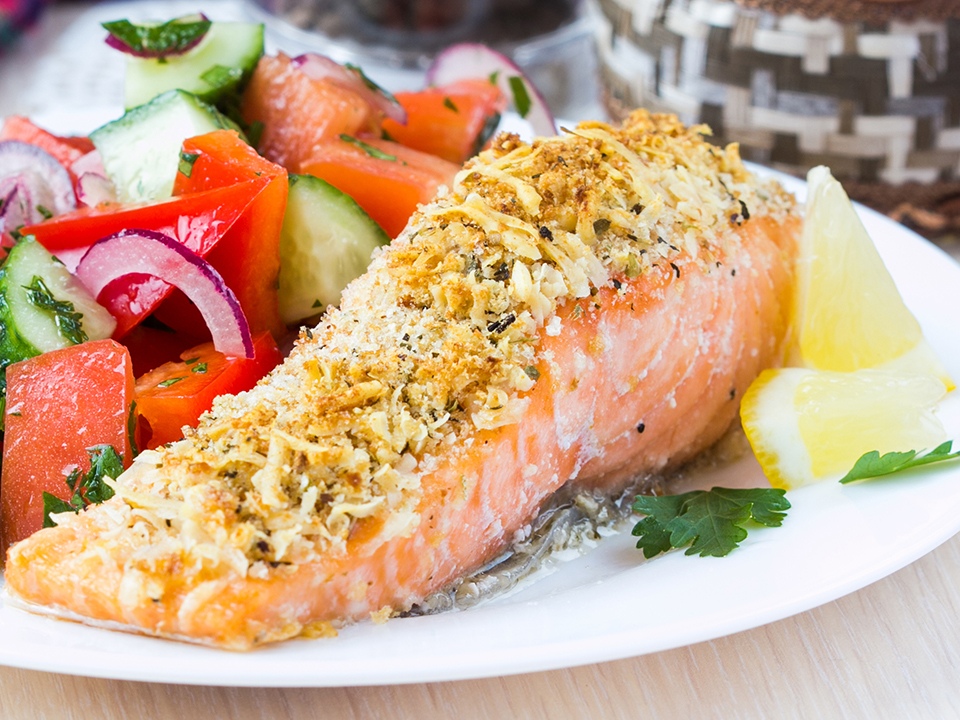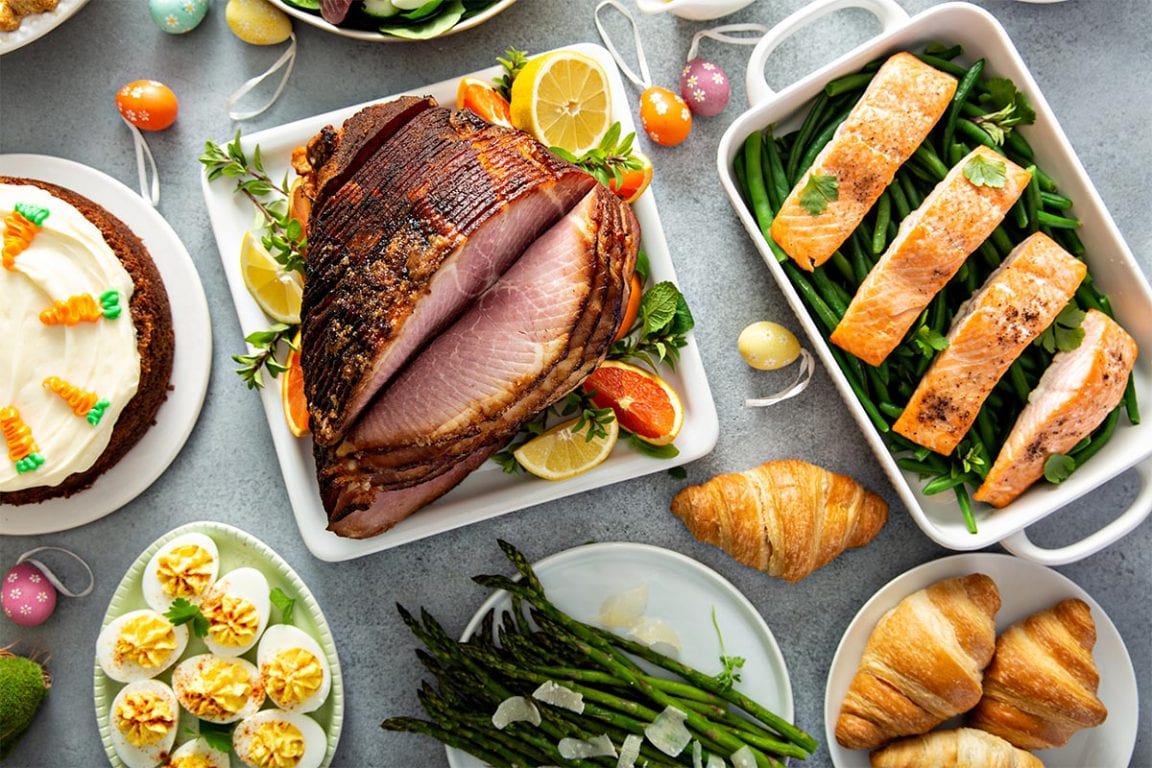Your Cholesterol Healthy Easter Plan
The long-awaited Easter break is here, and after 40 days of lent - perhaps giving up some of your favourite foods and drinks - it’s time to celebrate and enjoy good times with family and friends. But how do you keep your cholesterol levels on track over the bank holiday weekend (without having to miss out on all of the Easter celebrations)?

Healthy eating habits can go out of the window when Easter eggs and chocolate bunnies appear – Nevertheless Easter doesn’t have to mean overindulging on chocolate and other sweet treats: follow our cholesterol healthy Easter plan for a delicious and heart-healthy Easter!
Is chocolate good for you? Or is it just wishful thinking?
It’s often reported that chocolate may actually be beneficial for us, if as nothing else than a mood lifter! However, it’s important to remember that all chocolate is still high in calories, saturated fat and sugars, so overdoing it over Easter won’t do your cholesterol levels any favours. The bottom line is there are no ‘good’ or ‘bad’ foods and healthy eating is all about balancing pleasure, variety and moderation, so if you like chocolate, try these ideas to enjoy a little of what you fancy.
- Make it dark. If you usually go for milk or white chocolate, it’s worth going over to the dark side, and look for an Easter egg with 70% cocoa solids or more. Why? Dark chocolate may help you stick to smaller portion sizes as it’s richer, so it will please your taste buds with less. Better still, the darker the chocolate, the more likely you are to increase the amount of cocoa flavanols you consume.
- Don’t super size. Take a peek at some of the nutrition labels on Easter egg boxes in supermarkets and high street chocolate shops; you may be surprised to read that many of the larger eggs contain nearly 2000 kcals per egg, which is about a day’s worth of calories for most people. And around 70g of saturated fat – the amount in 27 teaspoons of butter. (Ref 6) Why not go for a kiddie’ Easter egg, which are usually smaller than those made for adults, and so contain fewer calories, saturates and free sugars.
- Small and perfectly formed. Opting for a single serve egg such as a creme egg or a baby gold bunny, or even an egg cup sized portion of mini truffle eggs is a great way to ensure that you don’t go overboard with your Easter treats.
- Don’t graze on chocolate all day. Easter eggs don’t all have to be eaten on Easter Sunday – break off a small chunk and then put it away for another day!
- Take time to savour the taste of chocolate. Chocolate melts at body temperature, so you can make a small piece go a long way by letting it slowly melt in your mouth – savouring the taste, flavour, texture and mouth feel (also known as mindful eating!). This will allow you to prolong the pleasure of sweetness while keeping the consumed amount in moderation.
Heart happy hot cross buns
Hot cross buns are traditional fare for the perfect Easter. And with dried fruits and spices, they’re typically healthier than cakes and biscuits, especially if you choose wholemeal, higher-fibre, versions. But what we put on them can easily change that! Butter is high in saturated fat, which can raise your cholesterol levels. (Ref 7) Spreading just two teaspoons of butter (10g) on your toasted hot cross bun provides 5.2g saturated fat – that’s a quarter of the recommended maximum amount you should have each day! (Ref 1)
Don’t fancy them plain? Swap out butter for Benecol® light spread and you’ll cut your saturated fat intake by 4.7g! You’ll also benefit from Benecol® unique patented ingredient, plant stanol ester. A daily intake of 1.5-2.4g plant stanols can lower your cholesterol by 7-10% in 2-3 weeks, as part of a healthy diet and lifestyle. Not bad for something you won’t even notice taste-wise!
Don’t forget about real eggs

It’s easy to forget about real eggs with the shops chockfull of chocolate ones at this time of the year. Eggs are not only fun to decorate at Easter, but are hugely versatile and nutritious to eat – perfect for a breakfast and an integral part of many Easter recipes too. As well as being fairly low in fat (about 4.6g fat in a medium sized egg (58g), and only a quarter of this is saturated fat (1.3g)), eggs are full of protein as well as vitamins and minerals that can be hard to eat enough of, such as vitamin A, vitamin B2 (riboflavin), B12, folate, vitamin D, selenium and iodine. (Ref 1, 8)
And generally you don’t need to worry about egg yolk’s high cholesterol content, as it is now understood that cholesterol in food generally has little impact on our blood cholesterol – saturated fat is of greater concern. (Ref 9) Eating 3 to 4 eggs a week is fine for most people! So whether you like them poached, scrambled or boiled, it’s time to put eggs on your Healthy Easter weekend menu!
Feast on fish on Good Friday and Easter Monday too…
It’s traditional to eat fish on Good Friday, but whether you observe this tradition or not, the Easter break is a great opportunity to embrace all things seafood. Seafood is high in protein and supplies an array of different vitamins and minerals like B12, iodine, phosphorus and selenium. (Ref 1) Plus, oily fish such as mackerel, sardines, salmon and trout, is packed with omega-3 fatty acids, which our bodies need to maintain a healthy heart. (Ref 10) What’s more – adding fish to your diet can help reduce your red meat intake and the saturated fat and salt that can come with it, which in turn, is good for your cholesterol levels and blood pressure.
Health guidelines recommended we eat at least two portions (around 140g cooked fish) of fish a week, one of which should be oily. So why not try making a delicious smoked mackerel starter or even rustle up a fish dish to give people around the table as an alternative to lamb on Easter Sunday. Check out some of our Benecol® fish dishes, like lemon crusted salmon recipe, served with some spring greens.

Get gardening
It’s that time of the year when the garden is emerging from its winter hibernation, and snowdrops are starting to appear. After months of hiding indoors, the Easter break is the perfect time to venture outside, and get gardening – perhaps mowing your lawn for the first time, cleaning out the greenhouse, or even planting pansies. Gardening actually counts towards your weekly exercise target of 150 minutes – provided it makes you feel warm and raises your heart rate. And heavy gardening, such as shoveling and digging, gives your muscles a good workout, so counts as a strength exercise. (Ref 11)

Gardening is also a great calorie burner – the average British woman (weighing 11 stone (70.2kg)) can burn around 265 calories in one hour of gardening (Ref 12), which will also go some way in helping to offset any moments of overindulgence. So with heaps of benefits for your heart health, and mental wellbeing (Ref 13) – if the sun is shining what better incentive is there for you to get into the garden this Easter weekend, and start pulling up those weeds? An added bonus is that your garden will look neat and tidy, and summer ready, too.
Spring clean your kitchen
We’re far more likely to eat the foods we see first, so it’s important that your Easter styled home is also set up to support your heart healthy eating goals. Keep the foods you want to eat more of visible and easily available – fruit bowl on the kitchen table, cut up vegetable sticks and cherry tomatoes in the fridge at eye-level. And, hide away all of those Easter goodies that will tempt you. Most of us have difficulty in exerting our willpower when we are confronted with a mountain of chocolate Easter eggs. So put them out of sight, this will help you be more conscious of consuming them.
Enjoy family time & the outdoors
Life is not back to normal yet, but don’t let on-going restrictions spoil your Easter family fun. Extended outdoor family get-togethers are now allowed under the new Government guidelines, so let springs’ sunnier days encourage you to get out in the fresh air and work off the Easter fare– go for a walk in the park, a lovely long bicycle ride or egg rolling in the countryside. Or, if you like to be creative, why not organise an Easter egg hunt or bunny trial for the children, or grandchildren in the garden?
And, if the weather’s miserable, don’t forget that there are lots of fantastic Easter arts and crafts ideas on the internet you can try with the family – from Easter puzzles and games to colouring pages and Easter bonnet decorating.
Eat regular meals
Tempting nibbles are everywhere at Easter and a rumbling tummy can easily get in the way of good intentions for a heart happy Easter. With this in mind, sticking to regular meal times and enjoying healthy snacks will help you to avoid hunger between meals, and maintain your will power. This way you can keep yourself on the healthy track and avoid excessive over-indulging during the break.
A glass of champagne? Oh, go on, then…
It’s no surprise many of us like to enjoy a glass of bubbly or two over the Easter weekend, but popping too many corks can also raise cholesterol levels in your blood. Plus, alcohol is high in calories, which can make you put on weight. Cut down, by alternating each alcoholic drink with a glass of water or finding an alcohol free drink you actually like to drink. And, watch out for very large glasses too. (Ref 14)
Easter food swaps your cholesterol levels and heart will love
Forget FOMO, and embrace JOMO (the joy of missing out). By making just a few simple swaps, you can cut the amount of saturated fat you consume, without detracting from your Easter fun – and your cholesterol levels will be delighted too. Now that’s something to be joyful about!
Easter swaps

Source: Nutritics Nutrition Software (www.nutritics.com)

Choose your lamb wisely
Many don’t consider their Easter Sunday table complete without roast lamb – and for lots of good reasons! Roast spring lamb is incredibly delicious and nutritious – it’s a great source of protein, and vitamins and minerals such as zinc and vitamin B1. Nevertheless, it is also one of the fattiest red meats. Choose the right cut of lamb, however, and you’ll save yourself extra helpings of saturated fat and calories (see my Easter swaps table).
Other heart healthier Easter Sunday roast ideas are:
- Don’t add extra fat to your roasting dish (let the lamb cook in its own juices), or better still, cook it on a wire rack so that the excess fat runs off.
- If you love your roasties, cut your potatoes bigger, as they’ll absorb less fat during roasting. Or for those wanting to be extra good this Easter, enjoy steamed ‘skin on’ new potatoes.
- Use herbs like mint instead of salt, and curls of Benecol® buttery taste spread instead of butter, for extra flavour and less saturated fat when serving.
- Have a good helping of seasonal vegetables with your roast lamb to help you reach your 5-A-Day; spring cabbage and kale are both in season at this time of the year and at their nutritional best, so get munching.
Benecol® wishes you a very Happy Easter!
* Plant stanol ester has been shown to lower cholesterol. High cholesterol is a risk factor in the development of coronary heart disease.
